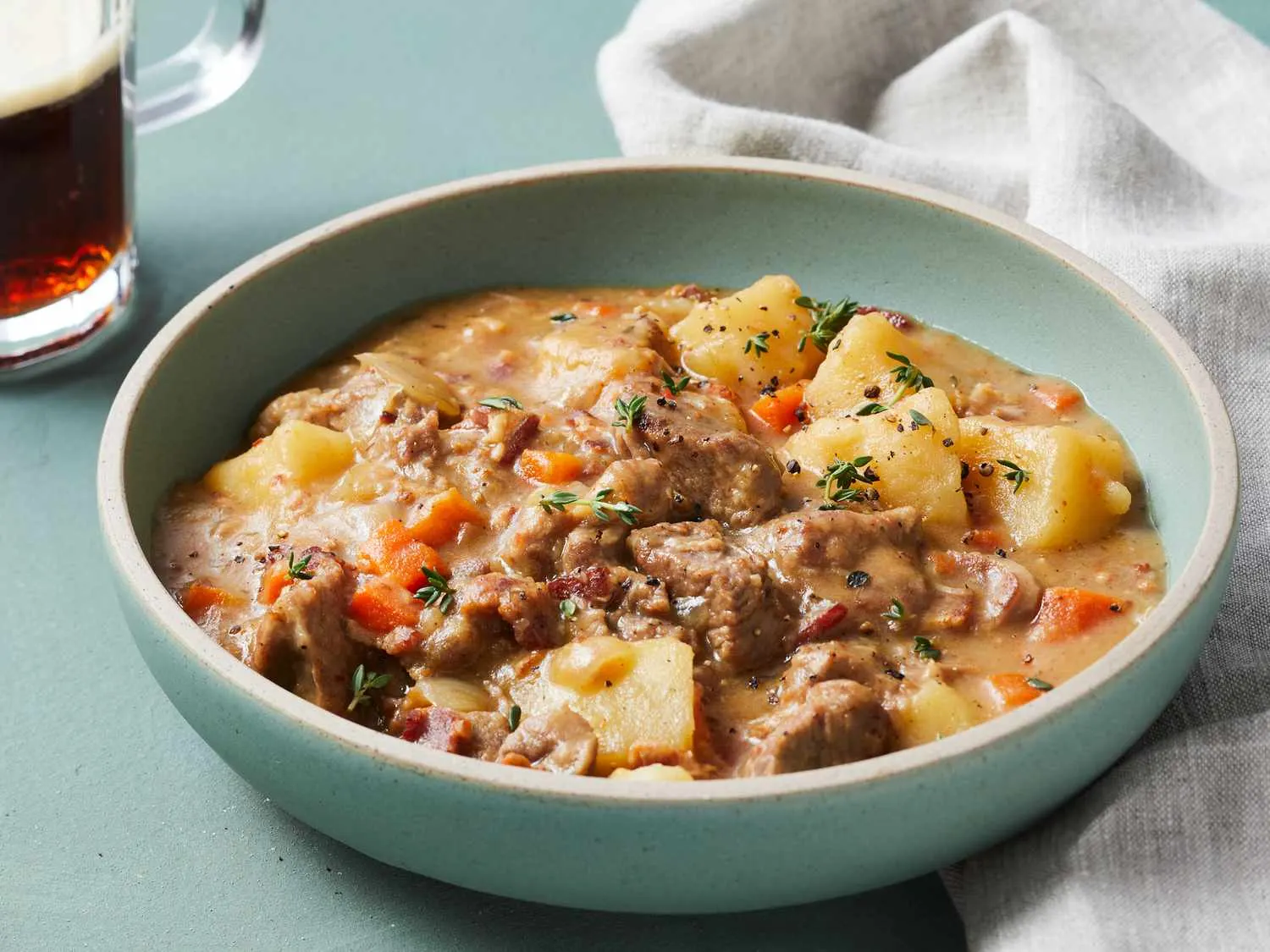
Irish Stew
A hearty traditional stew made with lamb, potatoes, and root vegetables. This warming dish has been a staple of Irish cuisine for generations.
Ingredients
- •Lamb shoulder
- •Potatoes
- •Carrots
- •Onions
- •Celery
- •Thyme
- •Bay leaves
- •Stock
Instructions
Prepare Meat
Cut lamb into chunks and brown in pot
Add Vegetables
Add chopped vegetables to the pot
Simmer
Add stock and herbs, simmer until meat is tender
Finish
Season to taste and serve hot
Irish Stew, a cornerstone of Irish cuisine, is a hearty and comforting dish that perfectly embodies the rustic, no-fuss cooking style of Ireland. This warming stew traditionally combines tender chunks of lamb with potatoes, carrots, onions, and other root vegetables in a rich, flavorful broth.
The origins of Irish Stew date back to the early 1800s when cooking over an open fire was common practice. The poorest families would make do with mutton (older sheep), potatoes, and onions, while more prosperous households would include additional vegetables and better cuts of meat. The long, slow cooking process was perfect for tenderizing tougher cuts of meat, making this dish both economical and delicious.
Making a proper Irish Stew is all about technique and patience. The meat is traditionally browned first to develop a deep flavor base, followed by layering vegetables in order of cooking time. Some cooks insist on using only lamb, while others are happy to substitute with beef. The key is to let it simmer slowly, allowing the meat to become tender and the vegetables to release their flavors into the broth. Traditional recipes don't use thickeners - the starch from the potatoes naturally creates the right consistency.
While the basic recipe remains consistent, modern variations might include Guinness beer for extra depth, or additional herbs like rosemary and parsley. Some cooks add parsnips or turnips for extra variety, while others might include pearl barley to make the stew even more substantial.
In Ireland, this dish is typically served as a main course, especially during colder months. It's often accompanied by crusty Irish soda bread, perfect for soaking up the flavorful broth. You'll find it served in homes and pubs throughout the country, particularly on cold, rainy days when its warming properties are most appreciated.
From a nutritional standpoint, Irish Stew is a relatively balanced meal. It's high in protein from the lamb, and the variety of vegetables provides essential vitamins and minerals. However, those watching their calorie intake should be mindful of portion sizes, as the dish can be quite filling. The stew is naturally gluten-free (unless made with beer or thickened with flour), making it suitable for those with gluten sensitivities. For those monitoring their sodium intake, be cautious with the amount of salt added, as the stock can already contain significant sodium.
